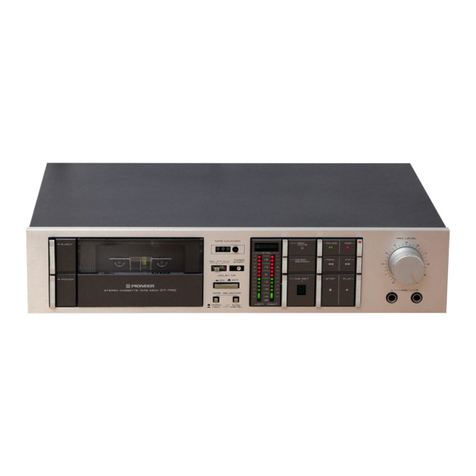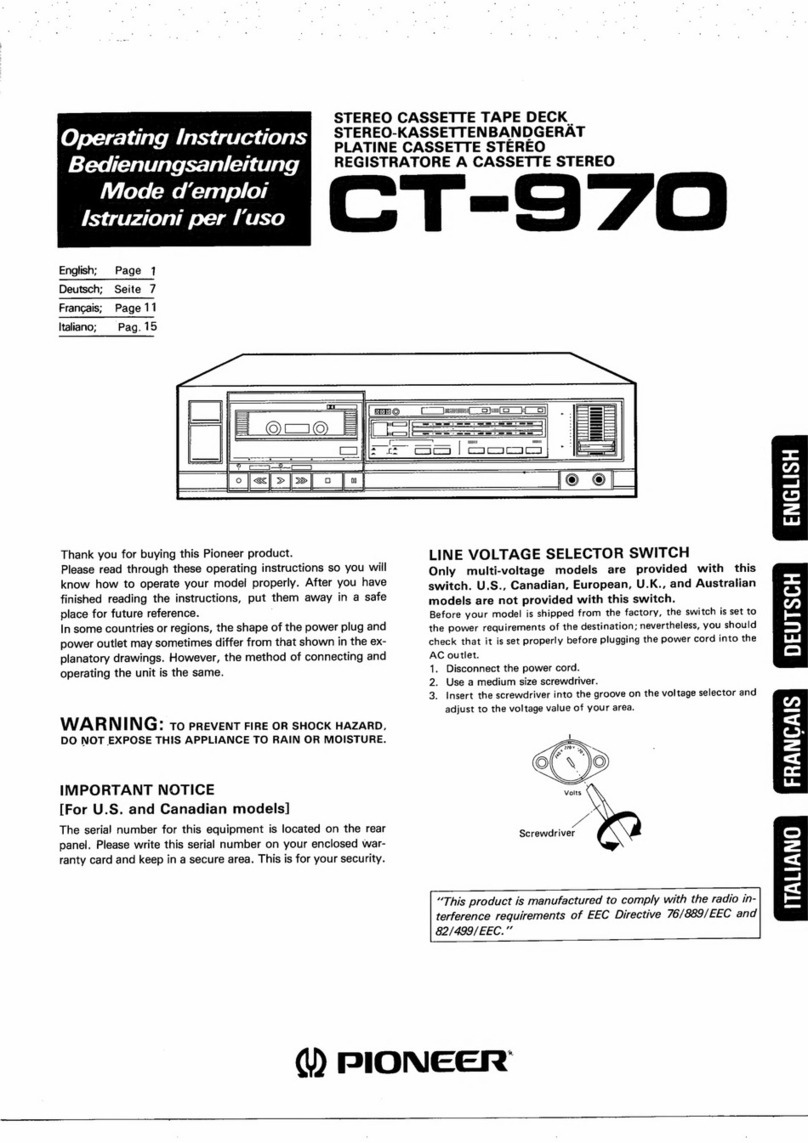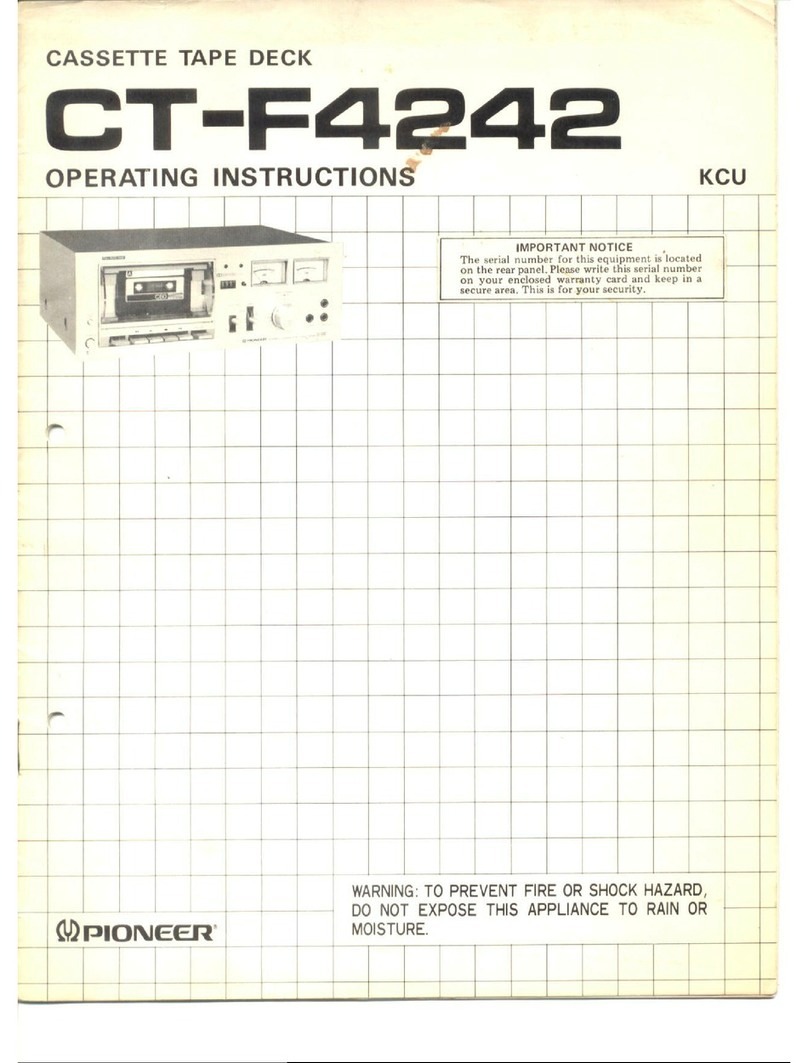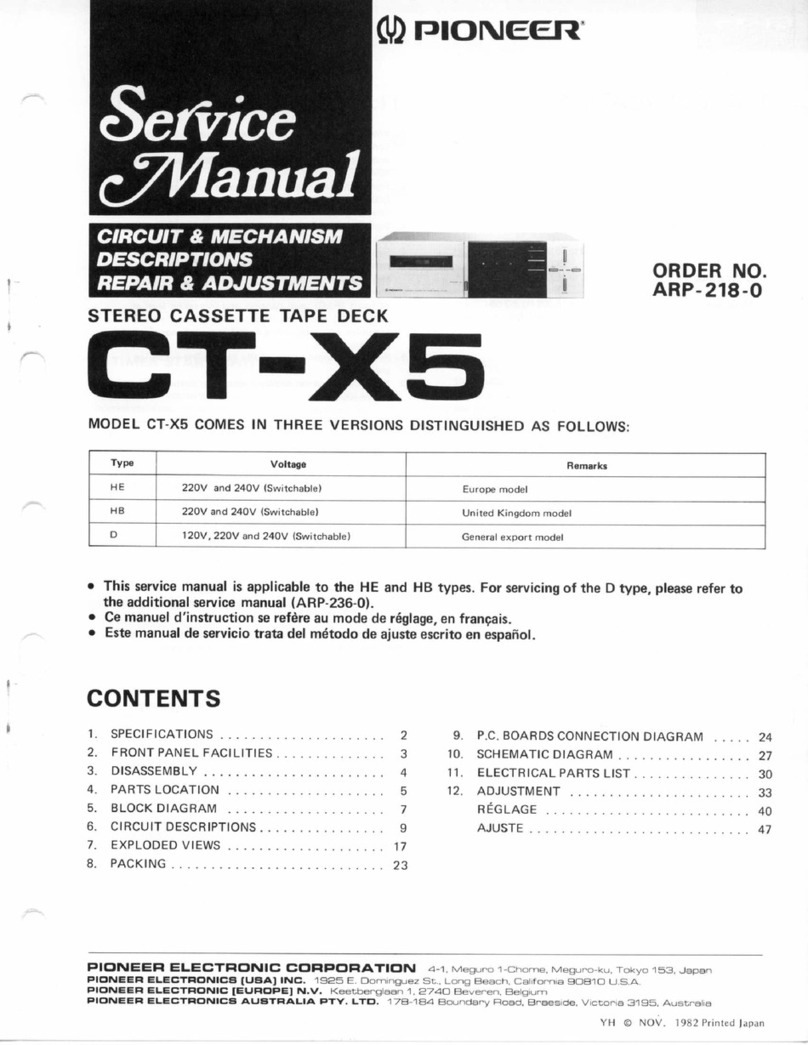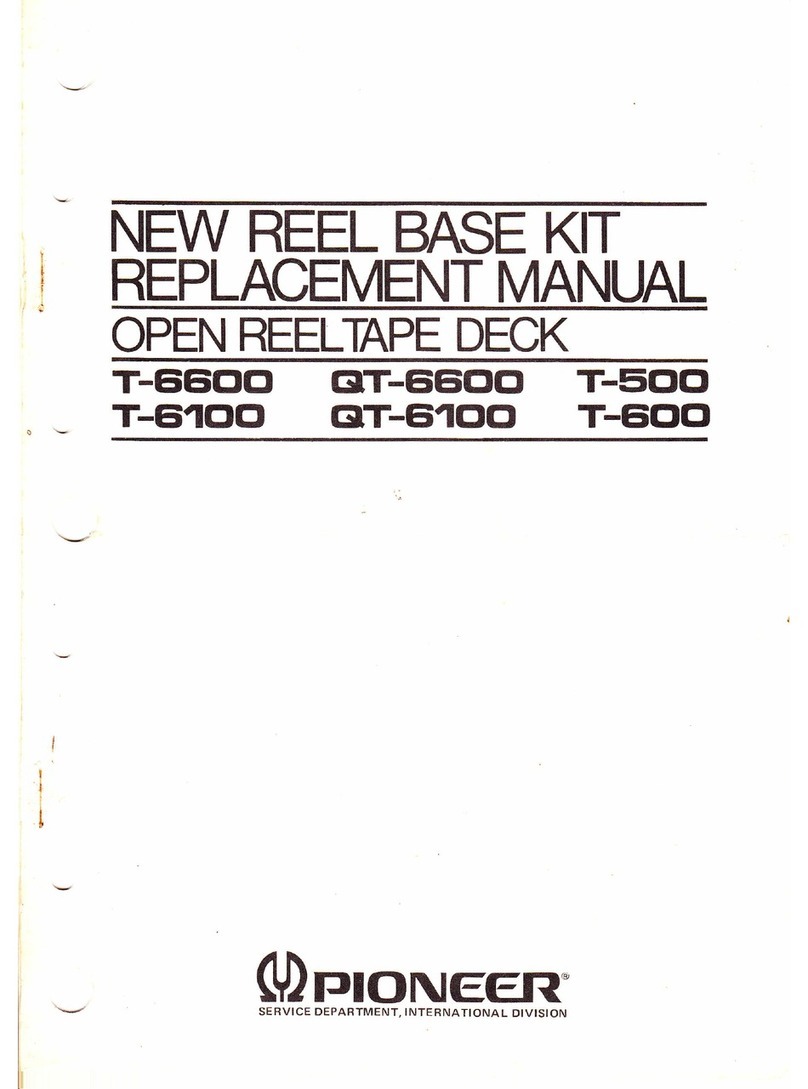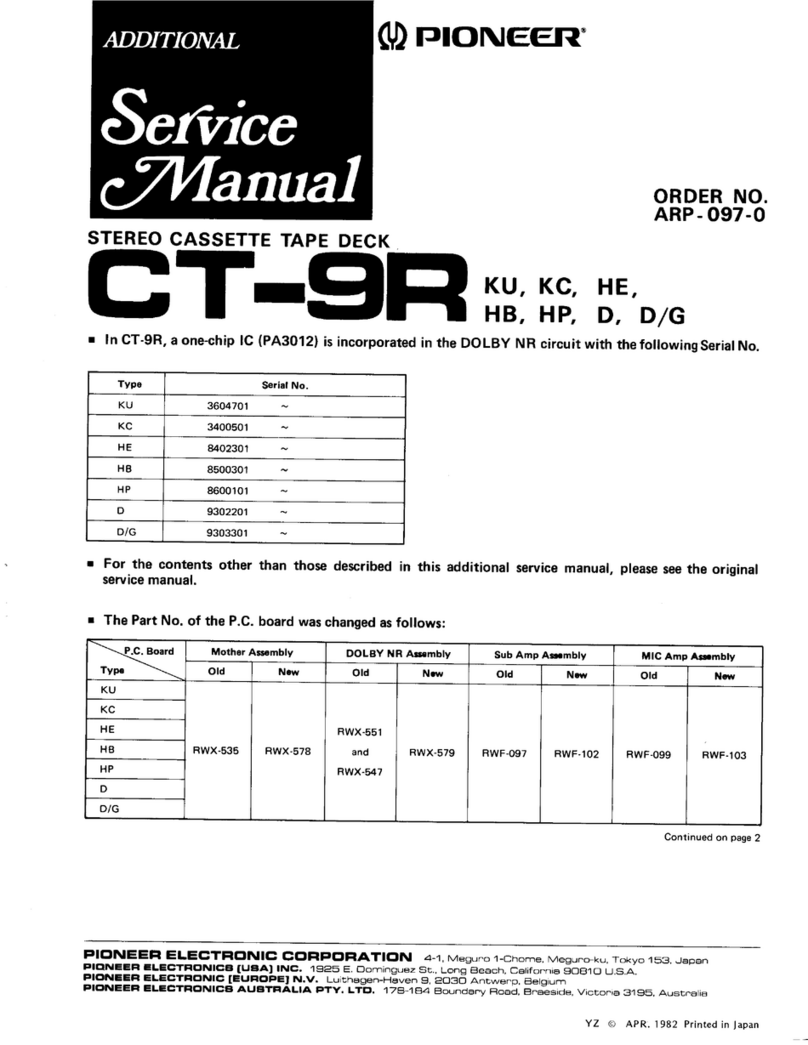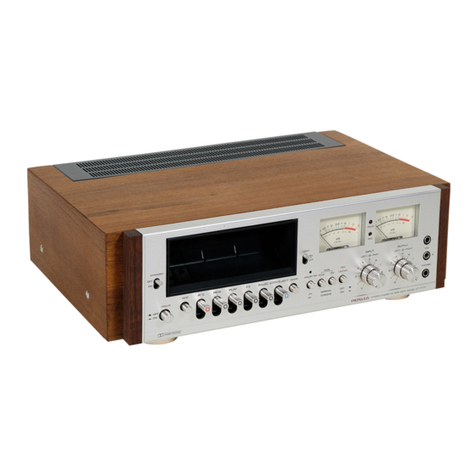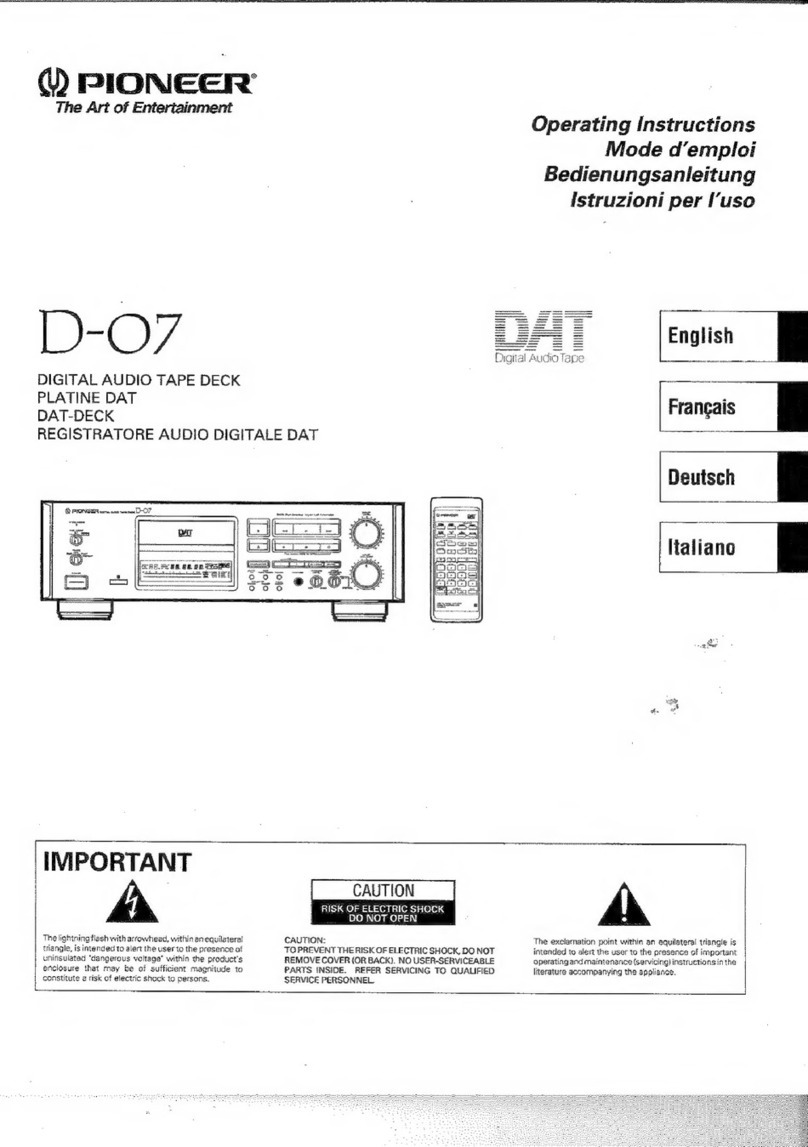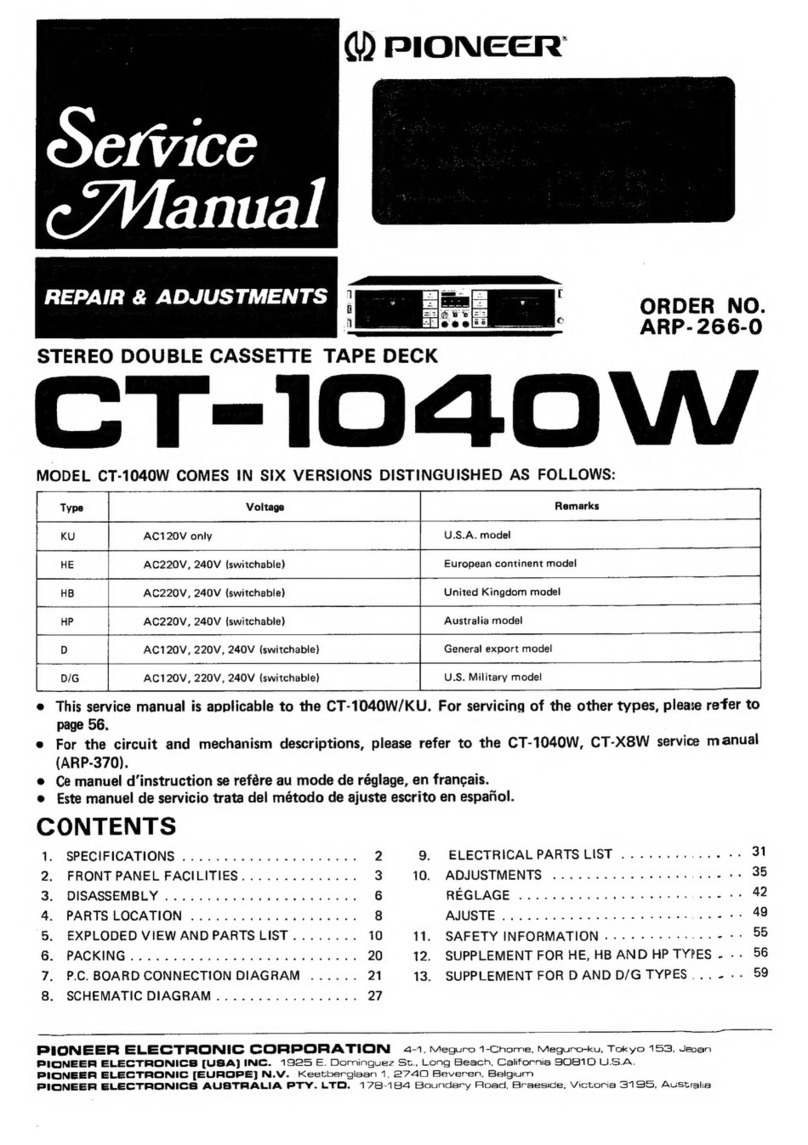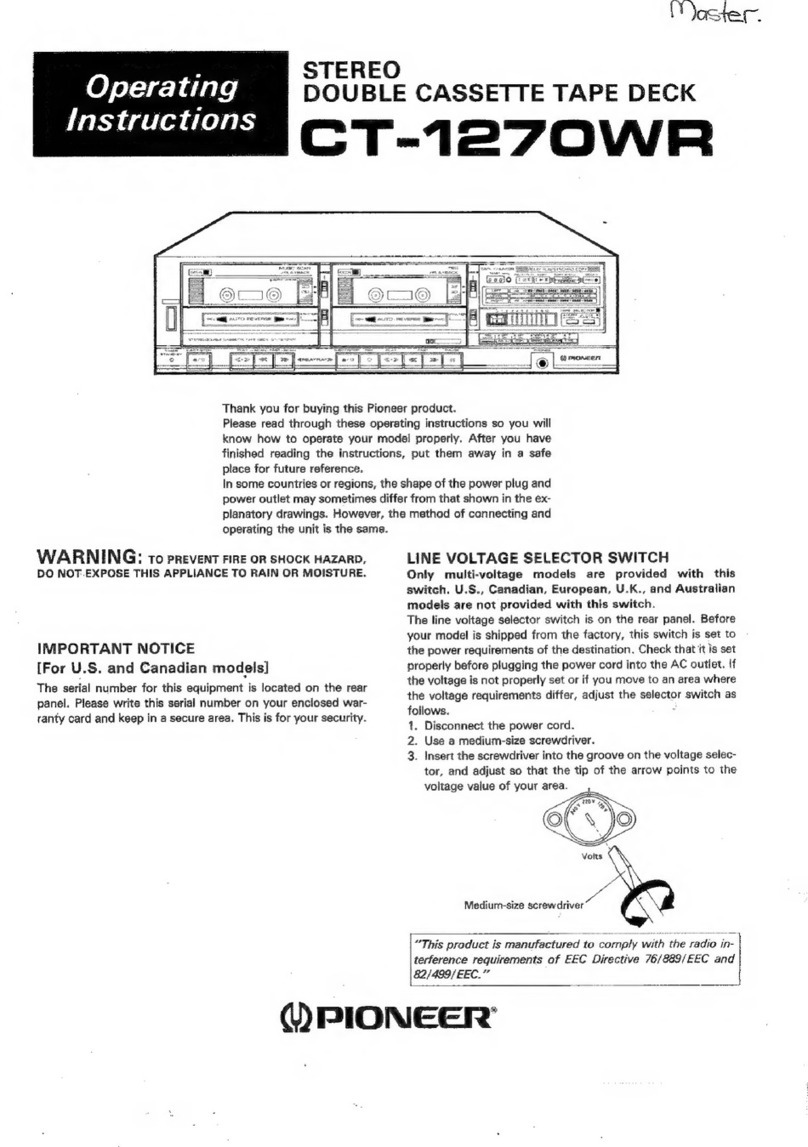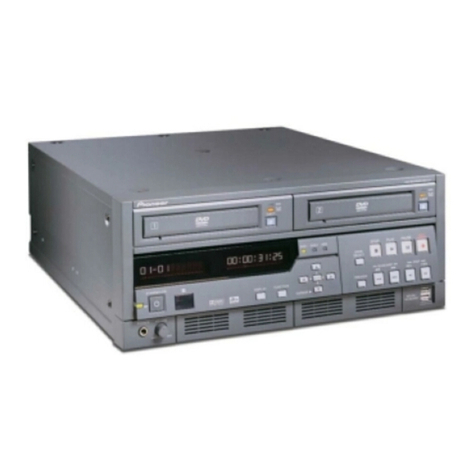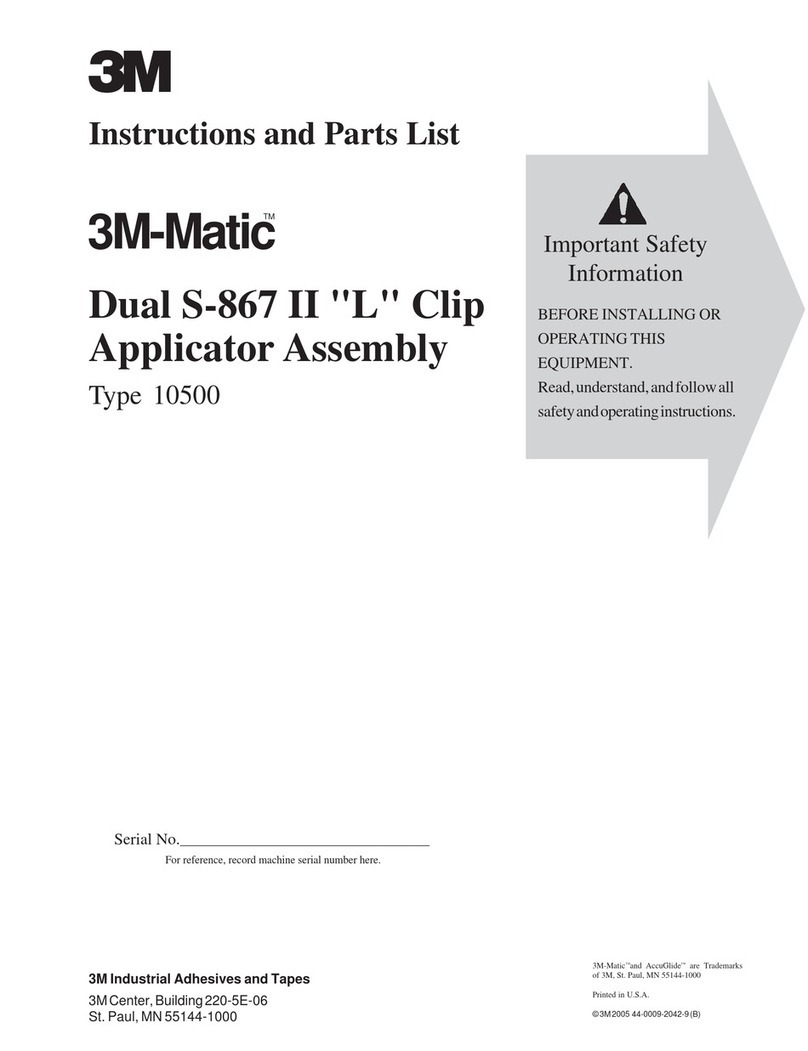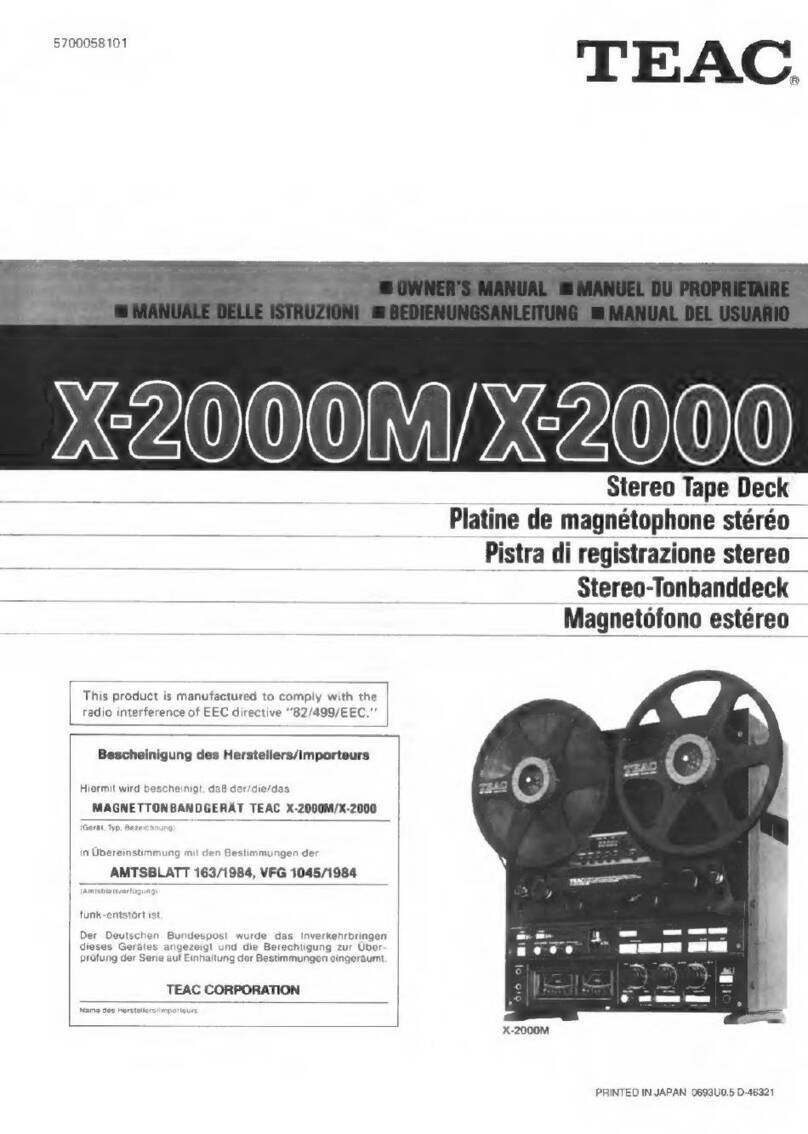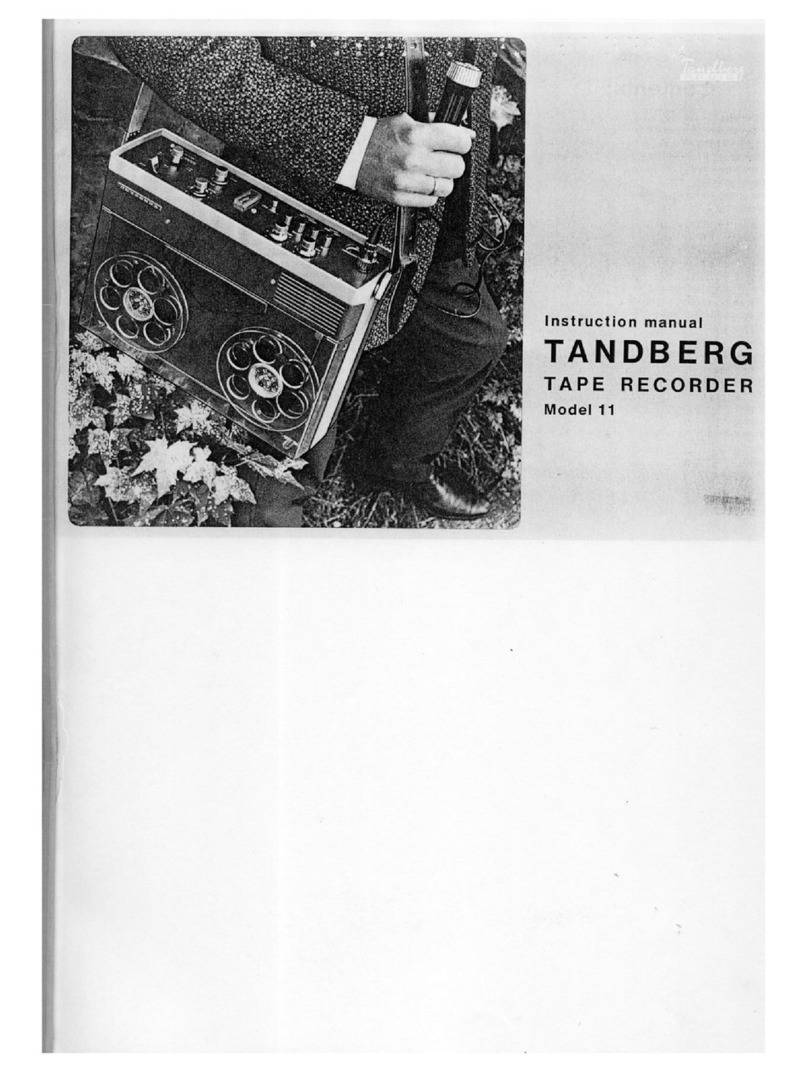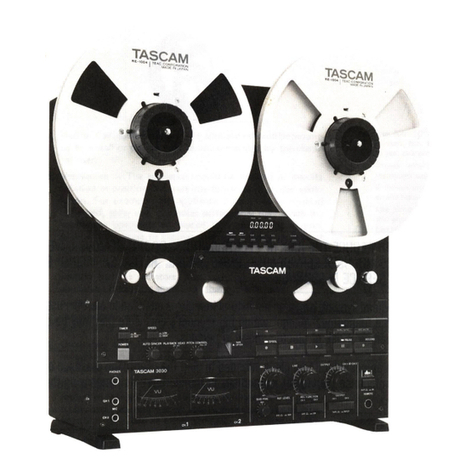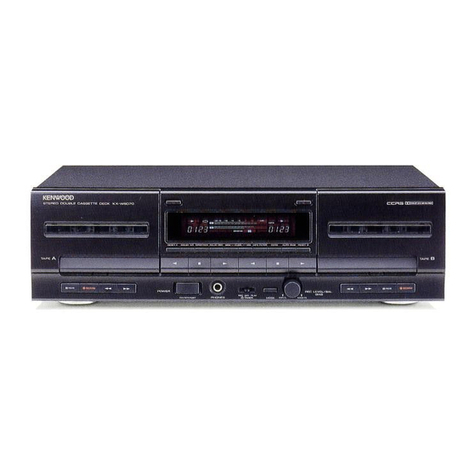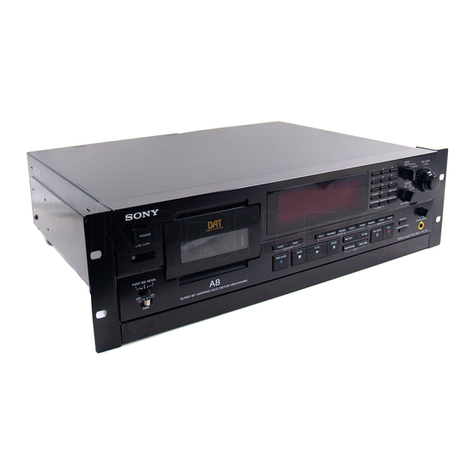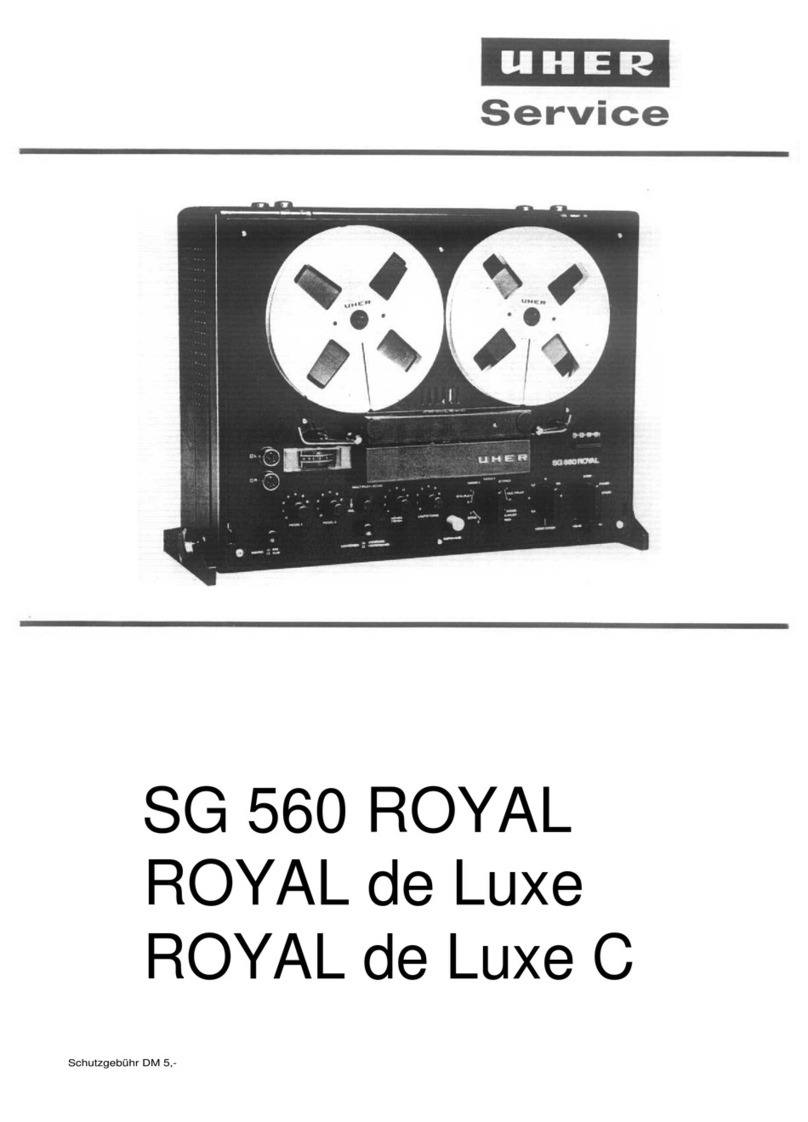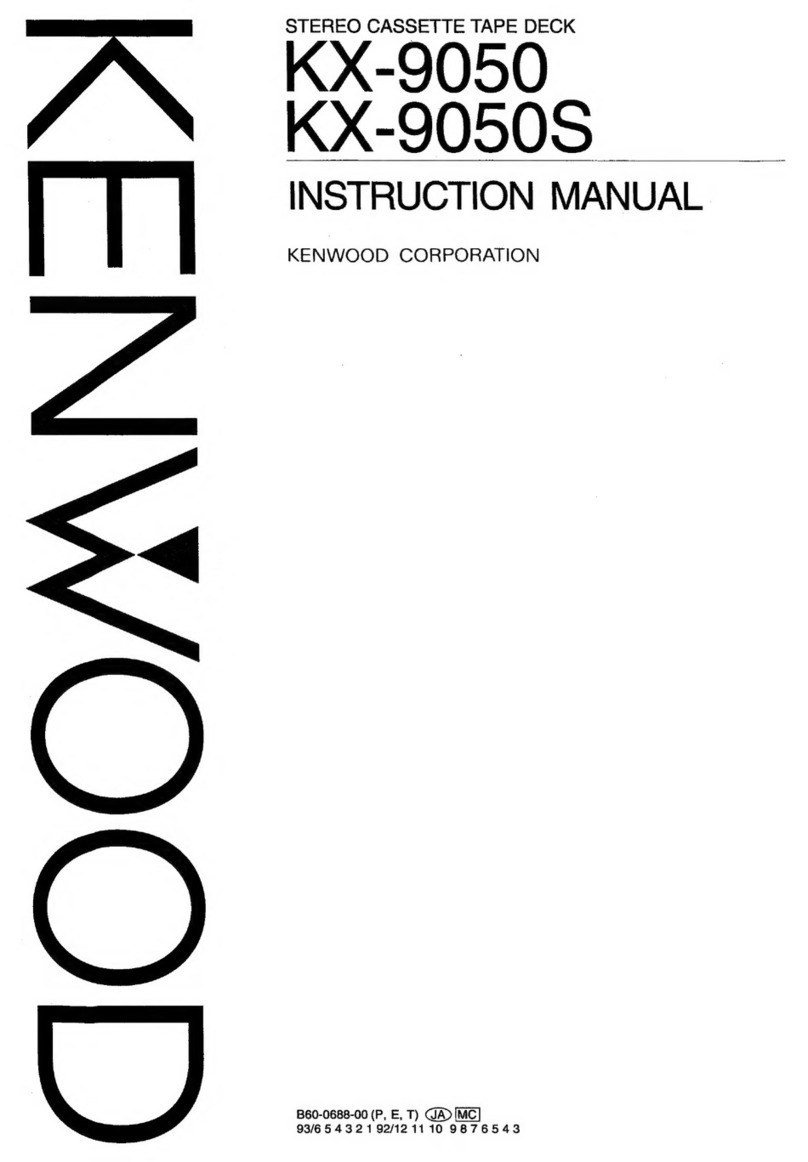
PIONEER
FEATURES
Sturdy Construction to Professional Standards
All mechanical parts are assembled on achassis made of
5mm thick aluminum of high dimensional precision and
supported by aunified diccast frame. This heavy-duty
construction gives high accuracy and long durability.
Precision Tape Transport Can Accommodate
10-inch Reels
The capstan is driven by a4/8-polc hysteresis synchronous
motor with alarge 100mm flywheel to maintain superb
speed accuracy without wow and flutter. The capstan
itself is machined to extremely precise tolerances.
The reels are driven by apair of specially designed 6-pole
inner rotor induction motors which combine the ideal
torque characteristics of eddy current motors with the
high starting torque of induction motors. No excessive
stress is applied to the tapes, thanks to the low rotational
inertia of the motors and the solenoid controlled dif-
ferential band brakes.
Three Tape Heads Including 4/2-channel
Playback Head
The combined 4/2-channel playback head features highly
precise track alignment, intimate lape-to-head contact due
to its hyperbolic curvature, and gives excellent performance
in regard to phase accuracy, linear frequency response
and crosstalk. In the recording head only 2-channel
stereo recording is possible much attention has been
paid to obtain optimum bias, signalto-noise ratio and
frequency response characteristics. Ihe three-head system
of course permits professional after-tape monitoring ol
arecording in progress.
Direct Coupled Playback Amplifier of Wide
Dynamic Range
For each of the four channels, a3-stage direct coupled
amplifier with low-noise silicon transistors is provided.
Its dynamic range goes it) beyond 20dB above OVU level.
2-track prerecorded master tapes can be played, too.
Separate Recording Amplifiers for Line and Mic
Inputs
The 2-channel recording amplifier features an excellent
signal to-noise ratio and awide dynamic range of 50dB.
Ihe microphone inputs are sensitive enough to permit the
use of studio-quality 600-ohm condenser microphones.
To maintain stable recording conditions regardless of
AC line voltage fluctuations or temperature changes, a
stabilized voltage supply has been adopted, while abias
current limiter has been included in the bias supply
oscillator circuit.
Independent level controls for the LINt and MIC inputs
permit effective mixing of program sources, "sing-along"
recording, sound-on-sound recording and other professional
processing methods.
Click Noises Prevented by Electronic Switching
Solid state electronic not mechanical switches in the
recording and playback equalizer circuits and adynamic
relay in the recording bias circuit prevent those unpleasant
click noises caused by normal switches.
3-position Bias Selector, 2-position Equalizer
Selector
To make the best of the extra quality potential of low
noise, high output tape (L.H. tape), proper bias current
and equalization are of paramount importance. On model
RM020L/H, biascurrcnt and equalization selector switches
have been provided to establish optimum recording
conditions for all types of recording tape now on the
market.
Swift-action Electronic Pushbutton Control with
Perfect Tape Protection
All transport functions are switched by electronic solenoid
pushbuttons. You can switch from any mode directly to
any other mode without having to push the stop button
and without fear of undue stress on the tape.
Automatic Recording in Your Absence
Ihe tape deck can be preset lor recording and, with the
help of an optional timer, can be energized at a preselected
time, for example to record an IMprogram that you
do not wish to miss.
Auxiliary Controls Worthy of aStudio Machine
Iape tension can be changed according to reel size.
Other controls include separate record switches for both
channels, a"recording" indicator equipped with alight
emitting diode, 4-channel/2-channel playback selector,
tape/source monitor switches lor front and rear channels,
aheadphone jack, etc.
Function Begets Form
Outward appearance matches technical excellence the
impressive looking control panel, large-sized LEVEL meters
and handsome controls are visual expressions of the high
level of technical performance that you can expect from
this tape machine.
3


